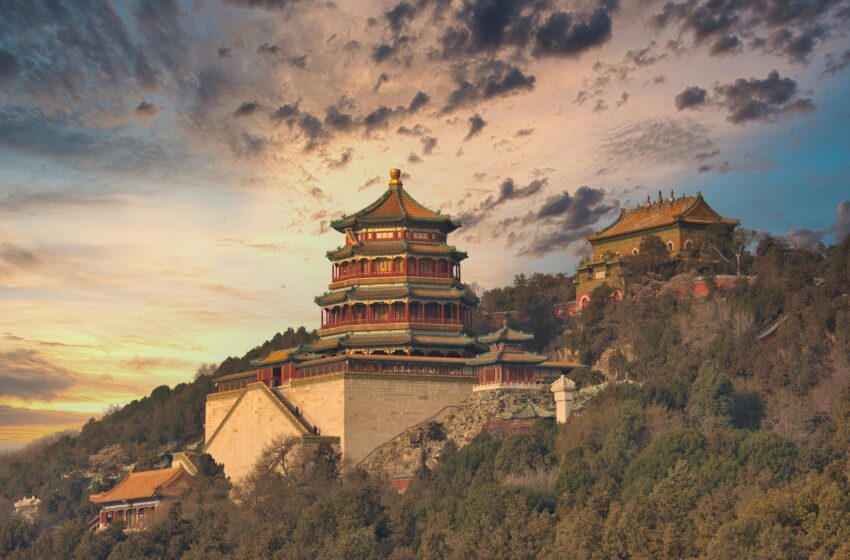
China’s Only Travel Guide You Need For A Great Trip in 11 Easy Steps
- Destinations Asia
Cruisit Team
- July 12, 2022
- 0
- 4783
- 79 minutes read
China’s Background
For centuries, China has been a leading civilization, surpassing the rest of the globe in the arts, architecture, and sciences. With over 4,000 years of documented history, China is one of the few remaining countries that thrived economically and culturally in the early stages of human civilization despite the repeated political and social upheavals that have afflicted the country. China stands out among nations for its longevity and endurance with much of China’s cultural evolution occurring with minimal outside influence, with the advent of Buddhism from India being a notable exception. Even when fierce peoples like the Manchu infiltrated the land, these tribes were quickly integrated into the fabric of Han Chinese society.
The rich history of China was created by multiple dynasties, a dynasty which occurs when the same family rules over the country for an extended period of time. From 2070 BC to 1600 BC, they were the Xia dynasty in Ancient China with many people believing that the tales of the Xia Dynasty were legends. Nothing was ever documented, and historians are still debating how much of the Xia Kingdom, China’s alleged first dynasty, is historically authentic. It wasn’t until 1959 that some actual proof surfaced, with the discovery of an old palace in Erlitou, Henan Province. In addition, several artifacts from the Xia dynasty were discovered.
The Shang dynasty reigned from 1600 BC to 1046 BC, followed by the Zhou dynasty, which began in 1046 BC and ended in 256 BC. The Zhou dynasty is China’s longest, lasting a total of 790 years, but it was really divided into two halves. This is owing in part to the fact that they were the governing family but had far less influence in Eastern Zhou, which spanned the majority of the dynasty’s duration. The Shang and Zhou dynasties are regarded as China’s Bronze Age because archaeologists have discovered many specimens of bronze weapons, vessels, and tools from that period. In Ancient China, bronze was used for practical rather than ornamental purposes.
The Western Zhou period, which lasted from 1046 BC until 771 BC, was ruled by the Zhou family. The Eastern Zhou is divided into the Spring and Autumn period (722 BC – 476 BC) and the Warring States period (476 – 221 BC). Power was decentralized throughout the Spring and Autumn periods, which meant that it was transferred from one monarch to many smaller, local rulers. During the Warring Nations period, seven states vied for total authority, with the Qin dynasty triumphing.
Sun Tzu was a Chinese general and military strategist who lived in Ancient China during the Spring and Autumn seasons. He is acknowledged as the author of The Art of War, a military strategy guide that outlines the tactics essential for war victory. Because of its philosophical and comprehensive scope, it is still a popular book in Far Eastern and Western military, as well as enterprises, sports, and lifestyles.
The earliest walls of China were erected as early as the 7th century BC, and other walls were added by various kings during the Warring States era. However, the portions were not linked until the Qin dynasty, soon after Ancient China became Imperial China, and the most renowned segments of the wall were not finished until the Ming dynasty in the 14th century AD.
China’s isolation from the world enabled the development and refinement of Chinese culture through the ages, but it also left China unable to deal with technologically superior nations such as Russia, Japan, and Britain when they invaded. The shock of this foreign assault formed the fuel for a revolution that began in the early twentieth century and culminated in the foundation of a communist government in 1949. After WWII, the Communists led by Mao Zedong constructed an authoritarian socialist regime that imposed harsh controls on daily life and resulted in the deaths of millions of people. After 1978, his successor, Deng Xiaoping, and other leaders emphasized market-oriented economic growth, and output had tripled by 2000. Although living standards have risen substantially for the majority of the people and personal freedom has grown, governmental constraints remain tight.
“China, a civilization with its values firmly planted in the past and a deep and sometimes dark history dating back more than 4,000 years. the seasonal shades in china’s spectacular scenery range from the pink azaleas in spring to the crimson leaves of autumn trees.“
China, Cathay, The Middle Kingdom, or Kingdom of Heaven, a nation with as many names as its history. Empires come and fall, but China has lasted thousands of years. This is the country that gave us, to mention a few things, fireworks, gunpowder, paper, and the compass. More recently, China has been recognized for its unique blend of communism and capitalism, amazing economic development rates, inexpensive items flooding Western retailers, and the benefits and drawbacks that come with being the world’s factory.
There is no doubt that China has a lot to offer, and you can never experience all of what the nation has to offer visitors in one trip. From the contrasts of the world’s most largest and polluted cities to regions with outstanding natural beauty in its mist-cloaked sacred mountains. Large palaces and temples like the Forbidden City in Beijing, Summer Palace, Shaolin Temple, and more line up the country. The greatest of all is the marvel of The Great Wall of China, a 13 thousand-kilometer stretch of walls as far as your eye can see. Xi’an and its wonders like life-sized Terracotta Warriors, traditional villages, bridges, Tibetan and Buddhist temples, snow-capped peaks, craggy canyons, and crystal clear lakes are just a few of what this great nation has up its sleeves for those wishing to visit China.
Amid the world’s oldest continuous civilization lays a modern skyline that is awe-inspiring. While you won’t be tripping over relics—three decades of nonstop development have rendered certain regions of the nation unrecognizable from their more modest origins— rich veins of antiquity await. Serve it all up to your liking: crumbling parts of the Great Wall, temple-topped mountains, forgotten villages, languorous water cities, majestic Buddhist grottoes, and old desert forts. Pack a good pair of travel shoes and remember Laotzu’s words: “a trip of a thousand miles begins with a single step.”
Within China’s borders sits a country that is both varied and complex. Its topography includes both the highest and lowest points on the planet, and its relief ranges from virtually impassable alpine hills to huge coastal flats. Its climate varies from severely dry, desert-like conditions in the northwest to tropical monsoon conditions in the southeast, and China has the biggest temperature difference between its northern and southern borders of any country on the planet.
Few countries have great outdoor activities like the UK, US, or Latin America’s beautiful landscapes, and China surely offers a ton of opportunities to explore off the beaten path. The magnificent sapphire lakes of Tibet or the impassive deserts of Inner Mongolia, island-hop in Hong Kong, or pedal amid fairy-tale karst pinnacles near Yangshuo are just a few of China’s landscapes. Swoon over the southern rice terraces, grab a photo among the beautiful golden rapeseed near Qinghai Lake or trek the Great Wall as it meanders between mountain ranges. Get lost in bamboo jungles or, when your energy runs out, nap on a remote Hainan beach and listen to the thud of dropping coconuts.
Choose between a trip to the yak-butter-illuminated temple halls of Xiahe, a voyage down the dusty Silk Road, a night at Everest Base Camp, or a night on the Shanghai tiles. China’s diversity is second to none, whether you’re an urban tourist, hiker, biker, explorer, backpacker, indefatigable museum-goer, or faddish eater.
China is enormous and its vastness is also most distinguished with its 1.4 billion people who live within its borders as one-fifth of the world’s population is Chinese. With that comes a lot of diversity as if they are many nations wrapped into one with dramatically varied accents and climatic and geographical extremes.
Regional and cultural variances over this large nation, will make your taste senses tantalized, challenged, and pampered. Before hiking Hua Shan, wolf down Peking duck in Beijing, melt over a Chongqing hotpot, or grab a seasoned rujimó (shredded pork in a bun). In a Silk Road street market, have a warm bowl of Lanzhou noodles, or up the temperature with some fiery Hunan food, or flag down the dim lunch trolley down south. Follow your nose in China, and you’ll never want to leave.
China may appear to be a stressful mess of gaudy modernity and thronging hordes at first look, but relax, take a deep breath, and you’ll uncover a fascinating world of limitless interest. Go to Beijing’s ordered chaos if you want to observe a pioneering initiative. It is the capital of a country that is changing faster than any other civilization in history, and it offers a fascinating, if polluted, glimpse into the world’s future.
Culture may be found in the country’s museums and attractions, from the Terracotta Warriors, who still defend China’s first emperor, to the Great Wall’s timeless magnificence. Go to a park early in the morning and practice tai chi before spending the afternoon people-watching at a traditional teahouse if you want to learn about the locals. Better yet, do everything.
Allow yourself a couple of days in each city to best explore China. If you’ve been tempted enough so far to explore Germany, read ahead for all the details you will need to not only enjoy your time and get to know what to do while in Germany, but also the travel budget, transportation options, and more.
- Walk through Beijing’s hutongs, where the popular Forbidden City is located. Don’t forget the Summer Palace, Temple of Heaven, and, for something more modern, the Olympic grounds.
- Yunnan, a province with far fewer tourists and spectacular scenery, try Lijiang and Shangri-La. Stroll the length of the Great Wall, or if that’s too much, just pick a section you like, from the most famous near Beijing to quieter spots like Jiumenkou near Shanhaiguan, or Tiger Mountain Great Wall at Dandong overlooking North Korea.
- Visit the Terracotta Warriors in Xi’an and walk along the city walls while you’re there.
- Climb at least one sacred Chinese mountain, such as Tai Shan or Mount Huang Shan in Shanghai.
- If you are in the area, why not visit Shanghai and contrast the historic English-built Bund and old district with the modern Pudong?
- The Potala Palace in Lhasa is often associated with the Dalai Lama, who resided there; as such, it is a contentious choice in China highlights, but the fact remains that Tibet is a part of China and this is a must-see site; if Tibet is out of the question, try Labrang Monastery in Xiahe for a look into Tibetan spiritualism.
- Visit Harbin in January or February to experience the Ice Sculpture Festival.
- Walk, canoe, or cycle through the karst limestone terrain outside Yangshuo, or try Wulingyuan in Hunan and stay in the adjacent scenic Dehang for a less touristic version.
- Travel through one of the many traditional Chinese villages that dot the country, from the Huizhou villages in Anhui province to the Hakka Tulou villages near Xiamen, to the canal-strewn villages around Suzhou and the quiet cave houses of Lijiashan, to the rain-and-wind bridge-filled Zhaoxing in Guizhou, to name a few.
- China’s official languages are Standard Chinese and Mandarin; English is spoken but not widely so, ask someone at your hotel or hostel to write down your name and address on a card in Chinese characters to show taxi drivers. The language barrier is a significant impediment. Few locals speak English, and it is hard for most visitors to acquire practical Chinese before or during their visit. The name of the game is pointing. Point to the sentence you wish to say in a handbook and let them read the Chinese translation. Point to the name of the town you wish to visit, and you’ll have your ticket before you know it. In a nutshell, point, point, point!
- China has an excellent hostel system that is inexpensive and of high quality. Use them; they are also an excellent chance to meet young, middle-class Chinese travelers eager to converse with you and perfect their English.
- Given the language barrier, a guided tour may be a better alternative for first-time visitors. However, this does not have to be a package trip; you can book directly through a tourist agency or one of Hong Kong’s numerous respected travel agents, who will organize all lodging and transportation for you.
- Eating can be challenging. It’s difficult to know what to order if you can’t read the menu or understand the waiter. Fortunately, there are many images in menus available, or you may simply gesture to the dish of the person seated next to you in the restaurant. Street food is simple enough; you can watch what is being prepared and determine whether or not it appeals to you. When confronted with sea snails, bird feet, a stew made from cow’s spinal cords, cockroaches, or scorpions on skewers, some tourists may be skeptical.
- There are many decent internal flights (and new airports and terminals are constantly being built), so you can easily tour more than one region in a single trip. Domestic flights in China are good, however, delays are common.
- China is a highly safe country where you may go around the cities without worrying about getting robbed.
- Chinese people spit and burp without feeling self-conscious, make a lot of noise, and do things that can appear nasty. This is a distinct culture. Just try to ignore it or your trip will be ruined. It is usual for foreigners to be surprised by the bathroom experience, thus it is a good idea to pack your own toilet paper to be prepared.
- When planning a journey to Tibet, check to see if foreigners are permitted to visit, and be mindful of the effects of altitude.
- China is a popular tourist destination all year. There is always somewhere worth seeing no matter when you go.
- Money exchange is simple, and ATMs can be found practically anywhere.
- In China, bowing is considered an apology, unlike in Japan.
- Beautiful hand-embroidered silk scarves can be found in Gubeikou hamlet, northeast of Beijing; those created by locals are far superior to the reprinted knock-offs on the market.
- Yangshuo is quite proud of its calligraphy tradition, and there is wonderful brushwork art to be found there; if you’re feeling creative, grab a pen and take a course.
- Tourists in China are increasingly being sold coral souvenirs, but they are endangered, and buying them should be avoided. The use of bear bile, tiger bones, and rhino horn involves the brutal treatment of thousands of endangered animals and their marketed usefulness is not even true.
Crime & Scams in China
Speaking of crime in China, the nation is often regarded as one of the world’s safest with most large Chinese towns are extremely safe, including Dandong, which has views of North Korean landscapes on the horizon. Tough law enforcement, a conviction record of 99 percent, and draconian criminal sentences serve as harsh and effective deterrents to major crime. To make a relevant comparison, China’s murder rate is around one-fifth that of the United States. Violent crime is still uncommon, and women wandering alone at night are fairly safe. As in every nation, there are occasional scams, and little crimes can occur, particularly in busy areas.
Unfortunately, rural poverty, urban violence, and widespread repression continue to exist. However, the only major difficulty for a traveler visiting China may be pollution. Pollution is the most serious problem in Lanzhou, Hengshui, Handan, Shijiazhuang, Xingtai, and Baoding.
Bag snatching, pickpocketing, and thefts are common in Liuzhou, Shenzhen, Guangzhou, Chongqing, and Chengdu, and Yarkand County is plagued with terrorism due to the conflict with Uighur extremists and the Chinese government, with organized explosions and shootings, which made it a volatile and dangerous place to be, but thankfully, no terror attacks have occurred since 2017.
Healthcare in China While Traveling
A number of issues restrain the maintenance of high-quality, cost-effective medical care and public health solutions in China, this is a nation of 1.4 billion people after all. One of the most difficult challenges is a lack of human capital in healthcare facilities. A study found that China had just 60,000 general practitioners, which is one for every 23,000 people. Nonetheless, this does not imply that the quality of both physicians and institutions is poor, despite the fact that they may be understaffed. Hospitals are on the rise, with over 26 thousand hospitals and healthcare institutions spread across the country. Many hospitals, especially in the big cities are equipped with the latest technologies in the medical sector along with highly capable doctors.
Before every trip, make sure you are up to date on all routine vaccinations. Among the key recommended vaccines globally are chickenpox (Varicella), diphtheria-tetanus-pertussis (DTP), influenza (flu), measles-mumps-rubella (MMR), polio, hepatitis, typhoid, and shingles. If you will be engaged with wildlife, you may want to consider taking a rabies vaccination.
When visiting China, you are not legally required to purchase travel medical insurance. However, it is always important to have comprehensive medical coverage when traveling because you never know what you could encounter while overseas, especially in a country where healthcare is very expensive for non-residents.
Consume only prepared and hot foods, avoid anything that has been sitting on a buffet, and eat raw fruits and vegetables only if you have washed and peeled them yourself.
Drink only from factory-sealed containers, avoid ice since it may have been manufactured from contaminated water, and consume only pasteurized milk.
Hands should be washed often with soap and water for 20 seconds, especially after using the restroom and before eating. If soap and water are unavailable, use an alcohol-based hand sanitizer with at least 60% alcohol. Keep your hands away from your face and lips as well.
While China has distinct seasons, led by dry seasons and wet monsoons, resulting in major temperature differences between winter and summer, it is a big country with a diverse climate. The south experiences subtropical weather with scorching summers, the north experiences harsh winters, and central China experiences a little of both. In the spring, go south to north; in the summer, go north to south.
Northern winds from high latitudes are cold and dry in the winter, whereas southern winds from lower latitude sea regions are warm and moist in the summer. However, the weather has minimal affect on cultural and historical sites such as Beijing, Shanghai, and Xi’an, which can be visited at any time of year, but be prepared for whatever the seasons throw at you.
Plan ahead of time and be prepared for large crowds of Chinese visitors if festivals coincide with your visit when it is high season.
Shoulder Season
The best times to visit China, weather-wise, are spring and autumn, which are the two shoulder seasons, with spring being February to late April and autumn being September to October when most major tourist spots have their finest weather. The spring shoulder season has better weather, but major holidays such as Chinese New Year disrupt travel plans. Chinese National Day (October 1-7) and Chinese New Year are both holidays (which is from late January to early or mid-February)
High (Peak) Season
Summer is the best time to visit China and the most crowded, lasting from May to August; expect summer downpours and crowds at attractions. Temperatures are rather warm this time of year, with daily highs ranging from 25°C to 33°C. This is the season of year when the most rain occurs, most notably in July (from March to August in Yangshuo). Expect hot, humid weather and packed attractions throughout August, which is a popular season for families visiting China. Labor Day and other holidays are observed from May 1 to 3.
Off-Season
The winter low season in China lasts from November to early March. Although the temperature is cooler during the low season, you may save money on hotels, flights, and admission fees, as well as escape the tourist swarms. Cities in northern China, such as Beijing, Pingyao, and Harbin, look stunning when covered with snow.
By Plane
Airplanes are the swiftest and most convenient form of international transportation between the rest of the world and China. Air travel allows you to save time and energy, allowing you to appreciate the attractions at your destination. Beijing (Capital International Airport and Nanyuan Airport) and Shanghai (Pudong International Airport and Hongqiao International Airport) are China’s two biggest airports, with Guangzhou and Hong Kong close behind. These four cities’ airports were among the top 20 busiest in the world in 2015. China’s airlines have made significant progress year after year. In 2015, 436 million air passengers were carried, nearly double the number of individuals who went in 2009.
By Train
Bullet trains provide speed, convenience, and economy on lines to cities where they are accessible. Because of its magnitude and low ticket prices, China’s new bullet train system is unique in the world. For example, you can now fly between Beijing and Shanghai in five or six hours for almost 90 USD, saving both money and time. However, for lengthier trips between Beijing and Guangzhou (8 to 10 hours) or Shanghai and Chongqing (13 hours), flying is certainly more convenient, but more expensive. When compared to ordinary railway stations, bullet train stations include more English signs and workers who know English.
The picturesque Qinghai-Tibet railway is worth the ride. If you have the time to go and the extra money, this high-altitude train is a memorable experience for many. However, it is significantly more expensive than a trip to Lhasa.
By Boat
Some people may prefer the relaxing alternative of foreign travel by cruise liner. Passengers traveling to Beijing on cruise ships land at Tianjin. Ships travel across East Asia and can take you to China or Hong Kong. There are also ferries that operate from Hong Kong and Taiwan to China.
China has a vast transportation network that includes subways, ports, airports, railways, roads, and waterways. High-speed rail lines, motorways, and several new subways have perhaps had the most impact on local people’s everyday life.
By Plane
Domestic flights are excellent for simple, quick, and convenient long-distance travel, especially to western and central China. Air China is China’s flag carrier is one of the most well-connected airways in the country. China Eastern Airlines, China Southern Airlines, Hainan Airlines, Shandong Airlines, Shanghai Airlines, Shenzhen Airlines, and Sichuan Airlines are among the other airlines.
By Train
Train travel is by far the most comfortable, convenient, and environmentally friendly method to move across China. China has the longest and most-used high-speed railway network in the world. Slower express, local, and overnight trains link numerous smaller towns in between.
By Car
In China, you can rent a car. Because China does not recognize international driving licenses and is not accepted in China. Foreigners can have a tough time hiring any car because you must get a Chinese driver’s license before renting one in China. Private drivers, on the other hand, are a handy and pleasant option. A driver can double as a guide and can meet you at the airport and your hotel and take you wherever you wish to go in an air-conditioned auto.
By Taxi
Taking a cab is the most convenient and safe method to move about. Taking a cab to your destination, whether it’s a hotel, a picturesque place, an airport, or a railway station, is a very quick and easy method to get there.
Taxis are available in nearly every city, and the charge is reasonably priced for Western visitors. Simply wave your hand and a cab will come to a halt. Prices vary by city but are often quite low. The meter should always be turned on. When you arrive, pay the driver and you should know that tipping is not customary.
You can also call a cab from your hotel and request that the concierge writes down your destination on a card. Tourists can also rent a cab for a half or full day, but be sure to negotiate a fee with the driver first.
By Bus
Due to unpleasant rides and safety concerns, it is recommend that you avoid using long-distance buses unless absolutely essential. Buses are inexpensive and convenient in China, but theft and other problems are more prevalent. Road conditions are normally fantastic, however, be aware that in isolated places such as Guizhou, Tibet, and Xinjiang, roads may be bad. It is recommended that tourists reduce their expectations for amenities and comfort in these places.
By Boat
Yangtze cruises, of all the rivers, are the most popular for cruise boat trips. There is an intriguing and lovely landscape. You may sail from Shanghai to Chongqing and explore cities and sites along the way as part of your leisure holiday.
By Metro
Traveling by subway is arguably the best option for travelers when they are accessible because they are easy to use, safe, and reasonably priced (a ticket can cost as little as 30 cents USD). Quick construction: Subways have been rapidly developed in various places since 2002. There are subway lines in about 23 cities, and more are being built in additional cities. Shanghai and Beijing have the world’s two longest subways.
They are a fantastic way for travelers to move about because there are English signs, maps, and attendants who speak English. Subways terminate in major hubs where you may easily connect to other modes of transportation.
SIM Cards & Calls in China
China has three primary mobile service providers, China Mobile, China Unicom, and China Telecom. The Chinese government owns the three operators. Local plans range in price from $19 for 30 days to $49. The only variation between the plans is the 4G LTE speed allotment, which ranges from 500 MB to 10 GB. SIM cards are available in China via CMH stores, convenience stores, and telecom shops or dealers. They’re also easily accessible at major airports including Beijing Capital International Airport, Shanghai Pudong, Guangzhou Baiyun, Chengdu Shuangliu, and Shenzhen Bao’an.
Alternatively, you may also get a prepaid eSim card from a company like Airalo, SIMCorner, HolaFly or Nomad. All the providers offer data-only plans that may be used with an eSim-enabled phone, so make sure your phone is compatible. It is also possible to sign up for a Solis WiFi Hotspot. Check before you travel because they only serve select areas. Airalo provides the most extensive coverage of over 180 nations.
Local Internet & WiFi in China
There are approximately 30 thousand free wifi hotspots in China, with the most in Shangai, Beijing, Guangzhou, Shenzhen, and Suzhou. Free airport WiFi is available in the majority of locations. Few airports are not equipped to provide WiFi. So, as soon as you get at your destination, you may begin documenting your journey. In numerous places, you will be able to utilize free café WiFi. Nowadays, most major tourist destinations provide free WiFi. Museums, shopping malls, landmarks, and even parks provide free WiFi stations. The average internet speed in China is roughly 90 Mbps, which is rather convenient.
Top Places in China

The Great Wall of China
The Great Wall of China is a network of fortifications erected across the historical northern frontiers of ancient Chinese kingdoms and Imperial China spanning more than 13,000 kilometers. Several walls were constructed beginning in the 7th century BC, with selected lengths being connected together by Qin Shi Huang, China’s first emperor. Aside from defense, the Great Wall has served additional objectives such as border control, trade regulation or promotion, and immigration and emigration control. The further you get from Beijing, the more authentic and less-crowded portions you will encounter.
Terracotta Army
Ancient Xi’an was a flourishing and sophisticated metropolis of business, religion, and innovation, located at the start and end of the Silk Road. Modern-day Xi’an is more traffic and smog than pomp and parade, but it is nevertheless well worth a visit because of its astonishing richness of historic structures and treasures, most notably the Terracotta Army, which still stands vigil. The Clay Army, considered the eighth Wonder of the World, is a set of three accidentally found subterranean trenches in Xi’an holding 8,000 life-size terracotta figures guarding the tomb of China’s first emperor. Each warrior has body armor, the bottoms of their shoes have tread patterns, and each of their heads and hands is distinctive.
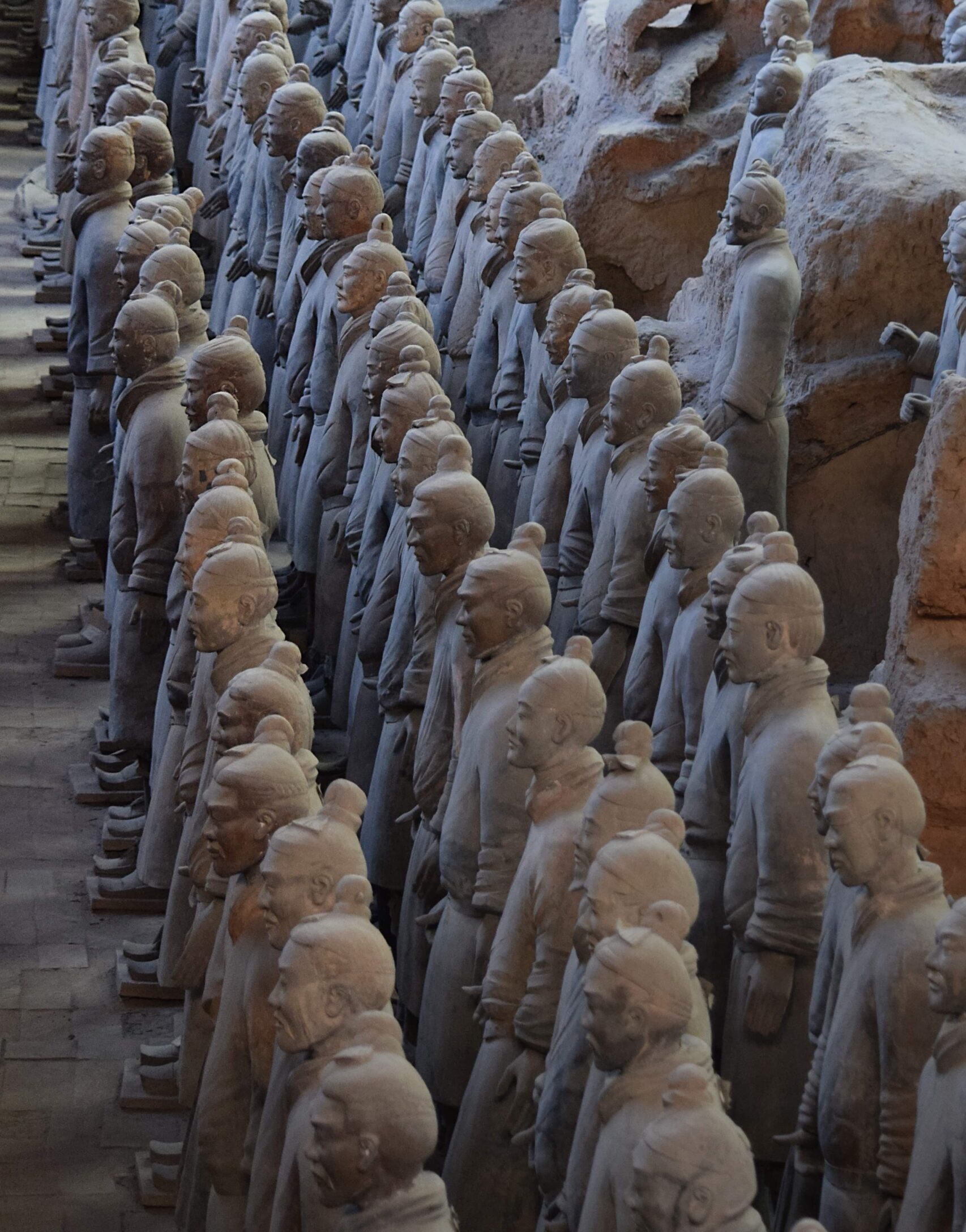

Temple of Heaven
The Temple of Heaven is an imperial temple complex in the southern area of downtown Beijing, built in 1420 as a place of sacrifice and prayer and is a World Heritage Site. The complex was visited by Emperors of the Ming and Qing dynasties for yearly prayers to Heaven for a bountiful crop. In this serene setting, you can observe people doing tai chi or elderly who appear to be squabbling but are actually discussing chess.
Forbidden City
For nearly 500 years, the Forbidden City served as China’s governmental and religious center. The City is a portion of Beijing, China, that contains the old imperial palaces and is restricted to royal family members and their employees. During the Ming (1368-1644) and Qing (1644-1911) regimes, it housed 24 emperors, their families, and servants.
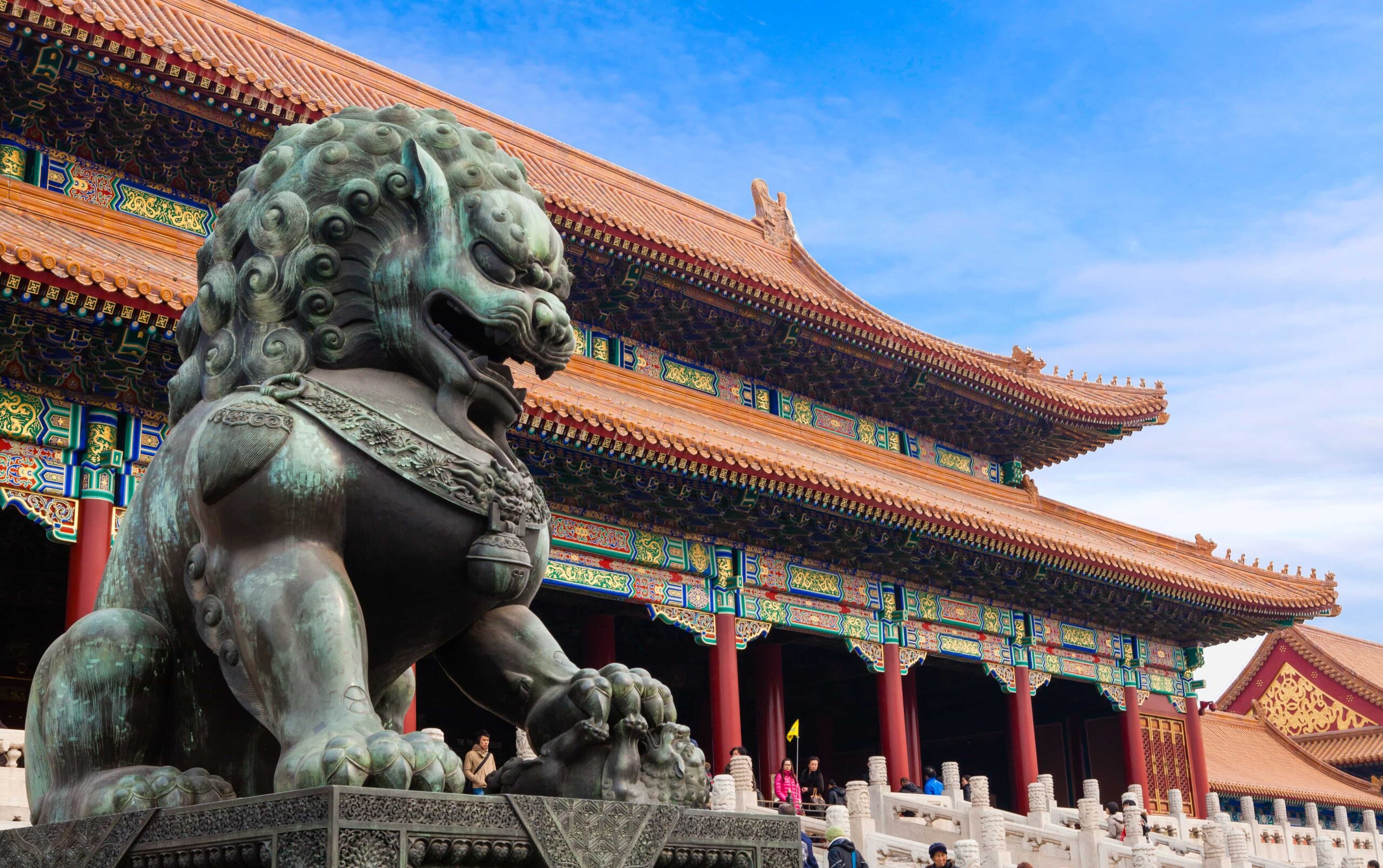

Zhangjiajie National Forest Park
Zhangjiajie National Forest Park was China’s first national forest park in 1982. It is part of the 397.5-square-kilometer Wulingyuan Scenic Area, which includes seven national parks. The park’s most noticeable geographical characteristics are the pillar-like structures that may be found throughout the area. Despite its resemblance to limestone topography, this location is not underlain by limestones and is not the result of chemical breakdown as is typical of limestone karst.
7-day Itinerary in China
Days 1 and 2
Arrive in Beijing
After arriving at Beijing Capital International Airport head to your hotel. The airport is around 40 minutes from downtown, and there are several methods to get there. Wear comfortable walking shoes because you will be walking a lot on your first day in China.
Begin your journey at The Great Wall of China, a UNESCO World Heritage site on Beijing’s northern outskirts. Armies are regarded as the most important sort of military force. But if a country is unable to protect its own boundaries, it is all for nought. The Great Wall of China is possibly the most massive military defensive project ever built. With a total length of more than 20,000 kilometers, its amazing fortifications will astound everyone. Visitors can tour the following portions of the wall: Badaling, Mutianyu, Juyongguan, Huanghuacheng, Jiankou, Simatai, Gubeikou, and Jinshanling. We prefer Mutianyu since you are coming from Beijing City.
After your half-day tour of the Great Wall of China, proceed to the Summer Palace, one of the most famous royal palaces of the Qing Dynasty. The Summer Palace was built as an imperial park to serve as a summer retreat for the Chinese Emperors. Longevity Hill Area, the Court Area, and Kunming Lake Area are three of the palace’s most well-known attractions. To fully understand the Summer Palace’s historical significance, we recommend booking a guided tour ahead of time. Local tours are also available at the East Palace Gate (the main gate).

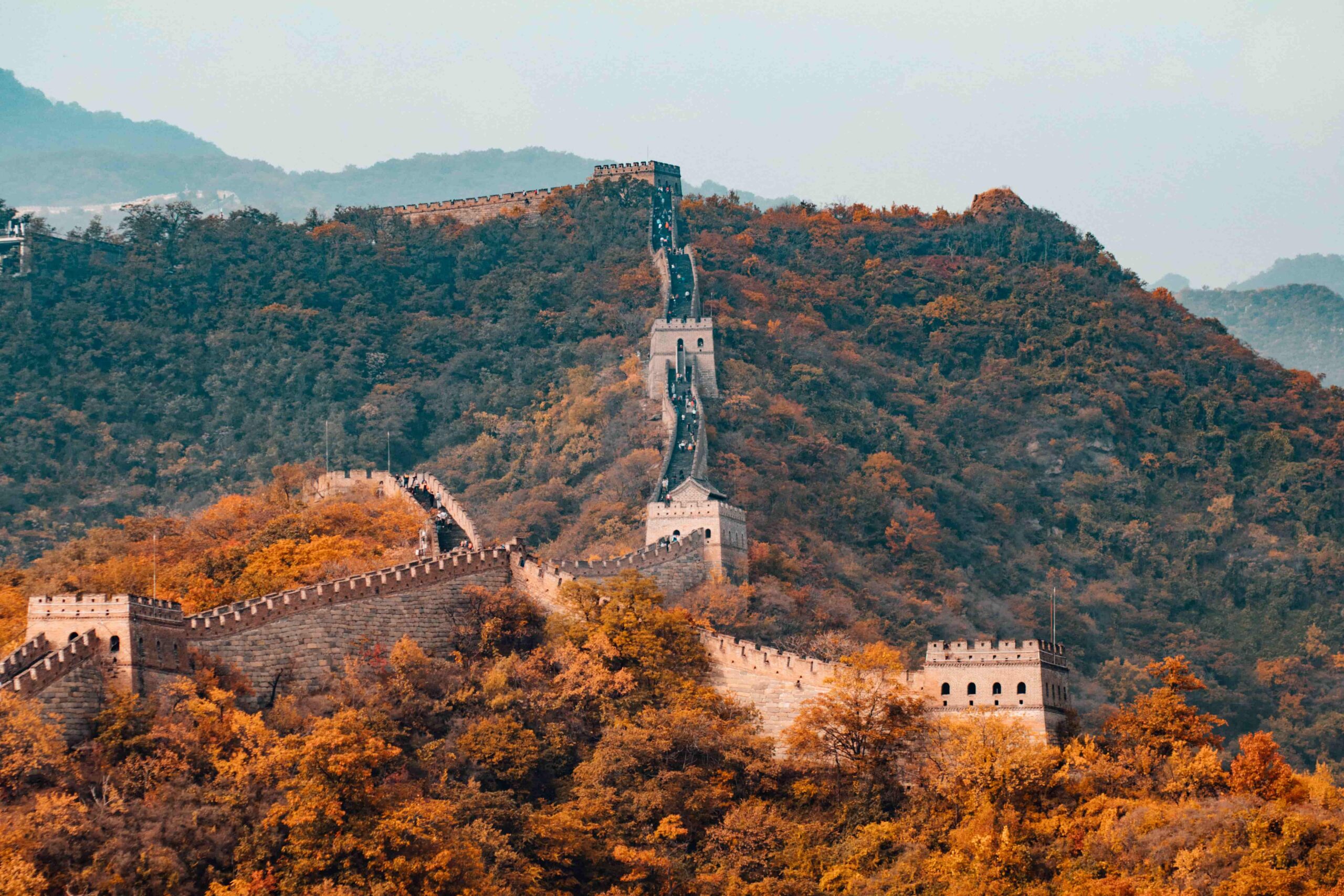
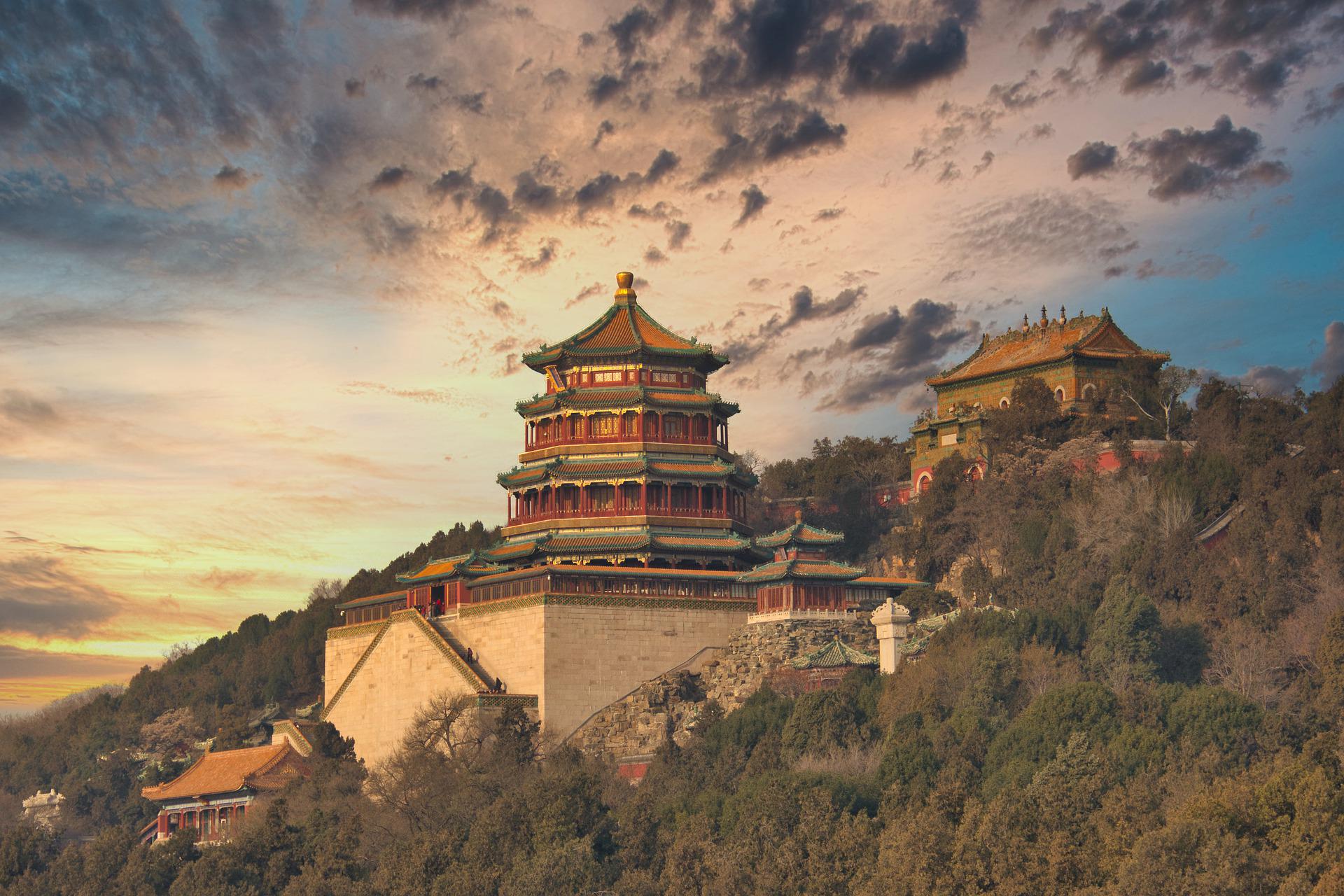
Then your second day in Beijing begins. A journey to Beijing would be incomplete without a visit to The Forbidden City, which holds one of the greatest collections of Chinese art in the world. The museum has a varied collection of traditional Chinese art from the Ming and Qing dynasties, as well as antique halls and other cultural and historical relics. Its interest is not just the things on show, but also the spectacular building and location, which was completed and unveiled in 1925. We recommend taking one of the guided tours to really enjoy the Forbidden City.
In the afternoon, don’t miss Tiananmen Plaza (which translates to “portal of heavenly peace”), China’s largest city square. This place is contentious due to what happened in 1989, when hundreds of pro-democracy demonstrators were violently suppressed and died. The world was startled by the Chinese government’s barbarism. Nonetheless, it’s a fantastic destination.
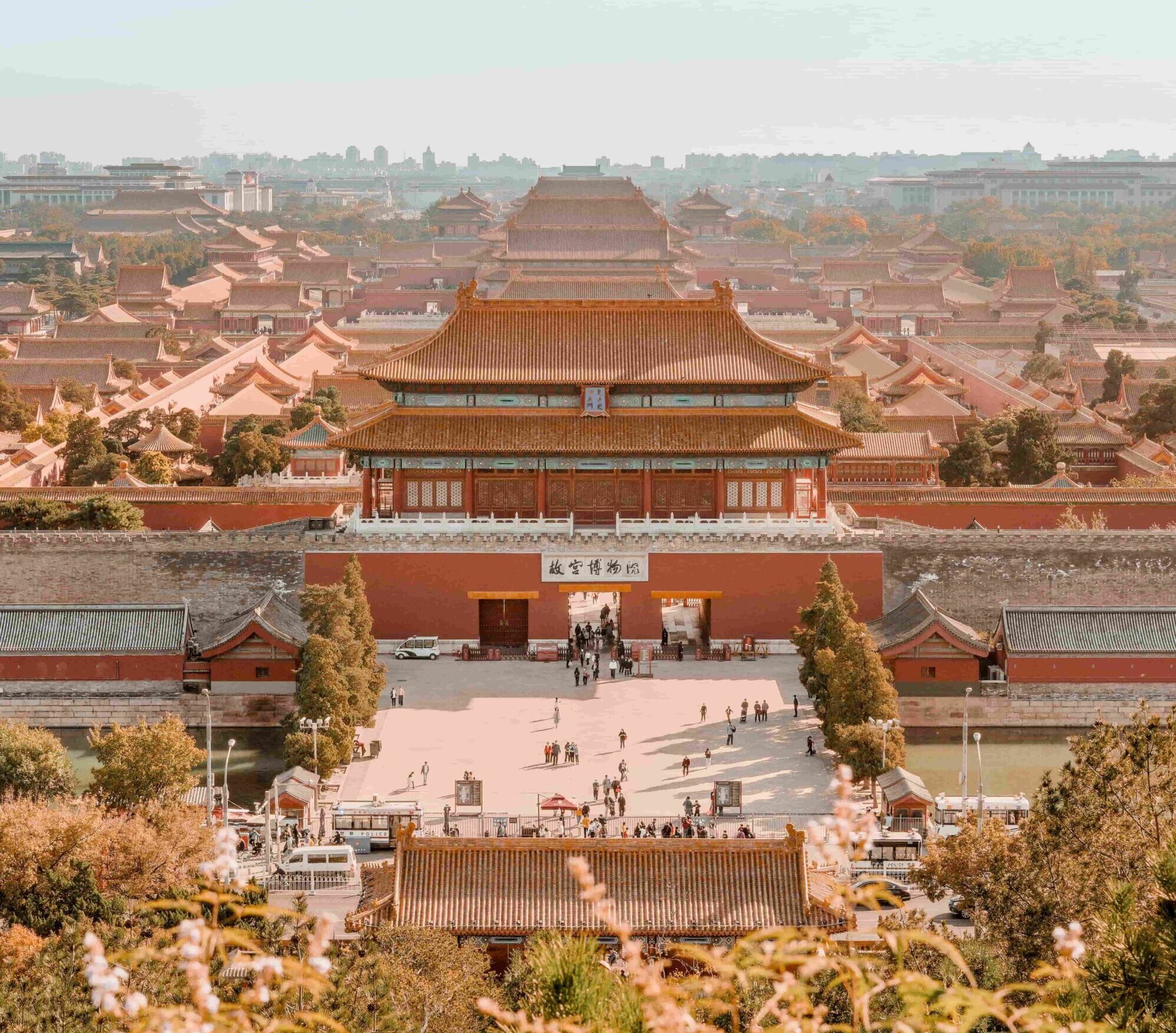
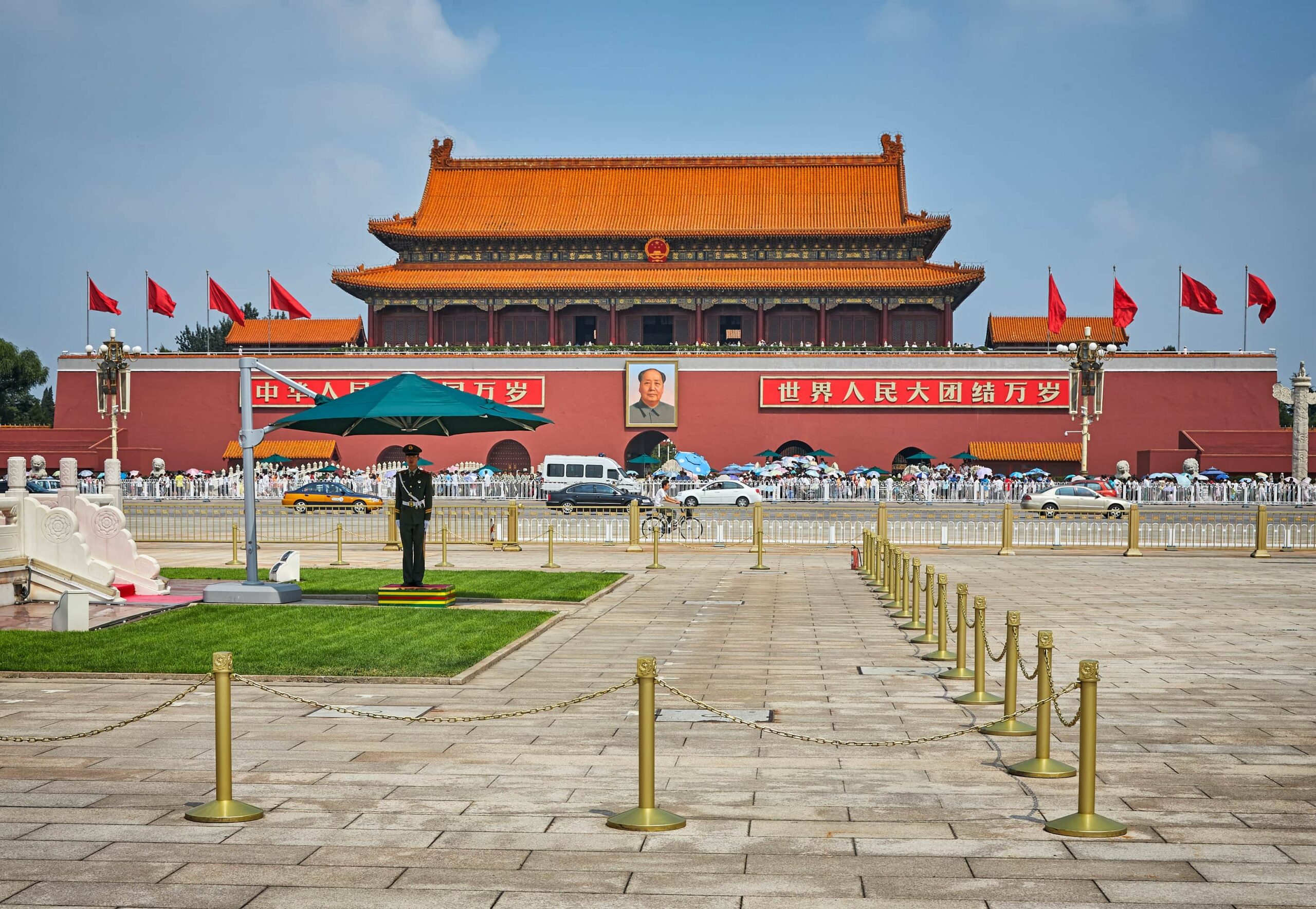
After your tour of Tiananmen Square, check out of your Beijing hotel and travel northwest to Xi’an, the capital of Shaanxi Province. The first overnight sleeper train departs at 6:55 p.m., so make sure you get to the station on time. Consider whether your time would be better spent in an airport or on a train if you have a restricted vacation. Traveling by train takes roughly 12 hours, allowing you to save money on one night’s lodging while still enjoying the sights (there are different classes on the train with sleeper class starting at about 40 USD). It would take around 2 hours and 15 minutes by plane, and tickets may be relatively inexpensive if bought in advance (prices of one-way airfare start at about 160 USD). However, you must consider the time it takes to go to the airport, security, check-in, and so on.
Because long-distance trains are usually completely booked, it is better to purchase your tickets many days in advance. When going during high season, it is preferable to book your tickets as soon as they become available.
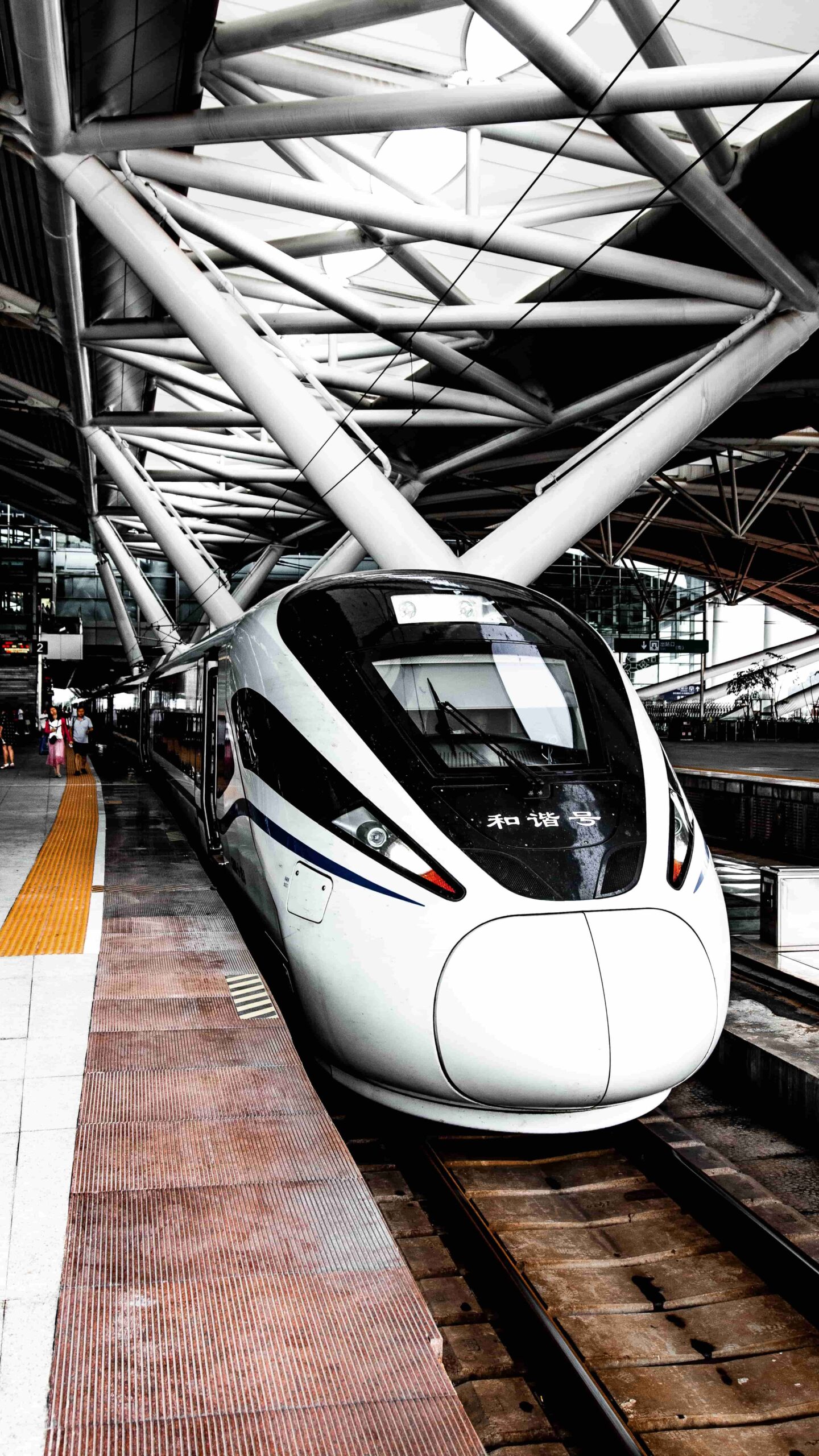
- Backpacker: Greentree Inn Beijing Capital Airport Second Express Hotel, Bestay Hotel Express, 7Days Inn Beijing Shunyi Development Zone Xiandai Auto Mall
- Budget: Pai Hotel Beijing Huaxiang Bridge Guogong Zhuang Subway Station, Home Inn Beijing Xiaoxitian, Home Inn Beijing Yansha Xinyuanli shop
- Mid-range: Holiday Inn Express Beijing Daxing, Shanshui Trends Hotel Shao Yao Ju, Beijing Dongfang Hotel, Hanting Express Beijing Workers' Stadium, Novotel Beijing Xin Qiao
- Luxury: Capital Hotel, Hilton Beijing Capital Airport, Renaissance Beijing Wangfujing Hotel, Wyndham Beijing North Hotel, JW Marriott Hotel Beijing Central, Sunrise Kempinski Hotel, The PuXuan Hotel and Spa
When it becomes dark, a foreign city may be twice as dangerous - especially if you don't understand the language and are unfamiliar with the area. However, there is no reason to be alarmed about walking home alone in the dark - there is just not enough crime recorded in Beijing to warrant anxiety.
This section will be added shortly. Refer to the transportation block in the top section.
Days 3 to 5
Wonders in Xi’an
Depending on your arrival time, you may either relax and soak in the ambiance of Xi’an or begin your tour of its notable sights. Check into your choice lodging and have a short nap before embarking on a full-day tour to The Museum of Qin Terracotta Warriors and Horses. After nearly 200 years of the Warring States period, Qin Shi Huang, the first emperor of China and the founder of the Qin Dynasty, was renowned as the great unifier. The country thrived under his tenure. He authorized several large-scale undertakings, including the early great wall and a massive tomb for himself. This tomb has over 8,000 life-size terracotta soldiers who are thought to be his defender after his death. Because there are so many historical aspects of this site, we recommend taking a guided tour to get the most out of your visit.
After a hearty breakfast, head to the Shaanxi Past Museum, one of Xi’an’s most famous sites, which highlights Shaanxi’s interesting history and has a great collection of antique paintings, porcelain, and terracotta figures, bronze ware, and much more. Following your tour, proceed to the Giant Wild Goose Pagoda, which was built by a notable Buddhist scholar during the Tang Dynasty. Another must-see item is the Great Mosque of Xi’an, China’s largest mosque. If you still have time, you can go to the Bell Tower and the Drum Tower. In the evening, spend your last night in Xi’an celebrating with a Dumpling Banquet and Tang Dynasty Show. The program includes over 20 different types of delectable dumplings, a world-class theater cuisine, and a traditional Tang Dynasty dance.
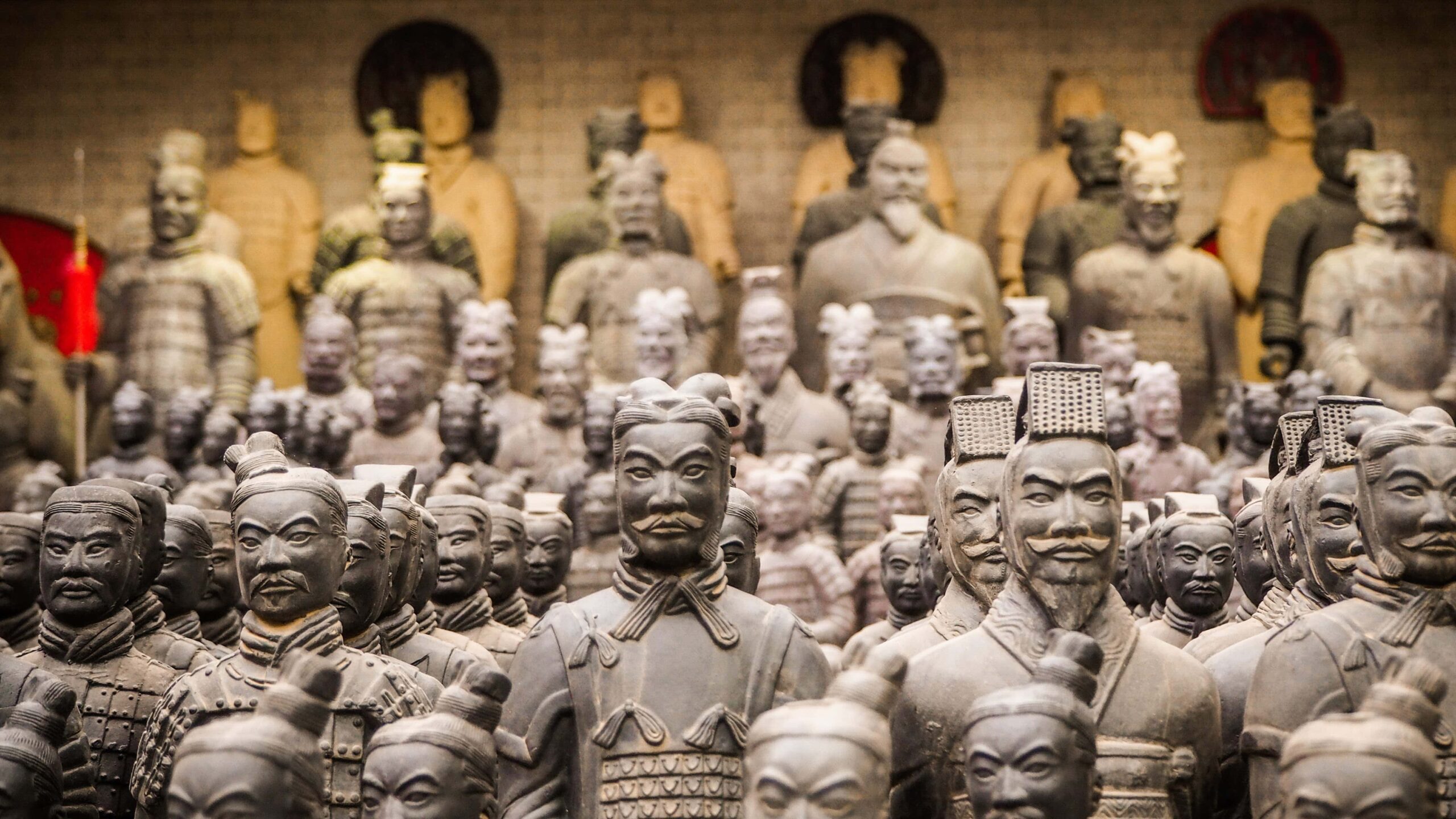
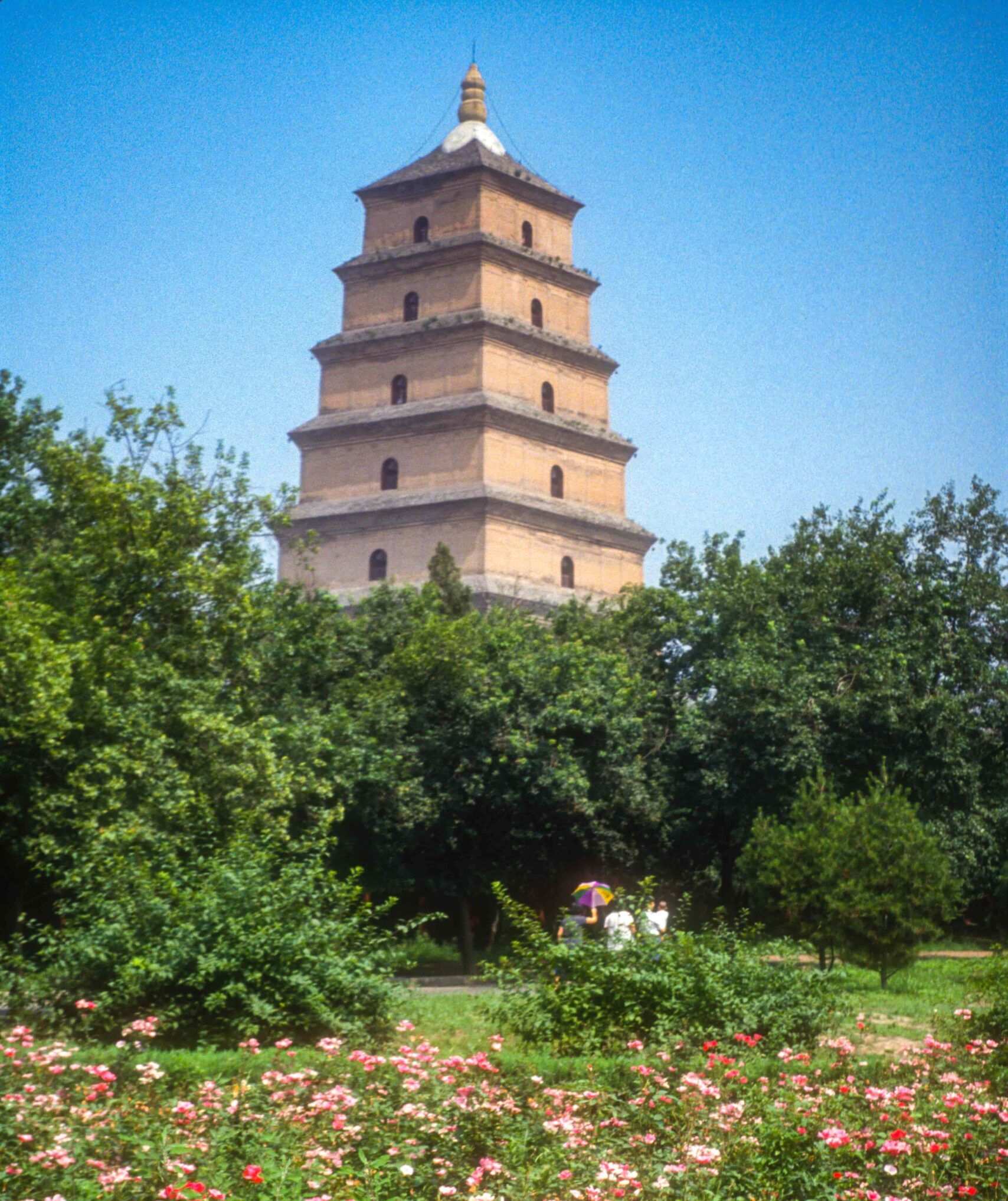
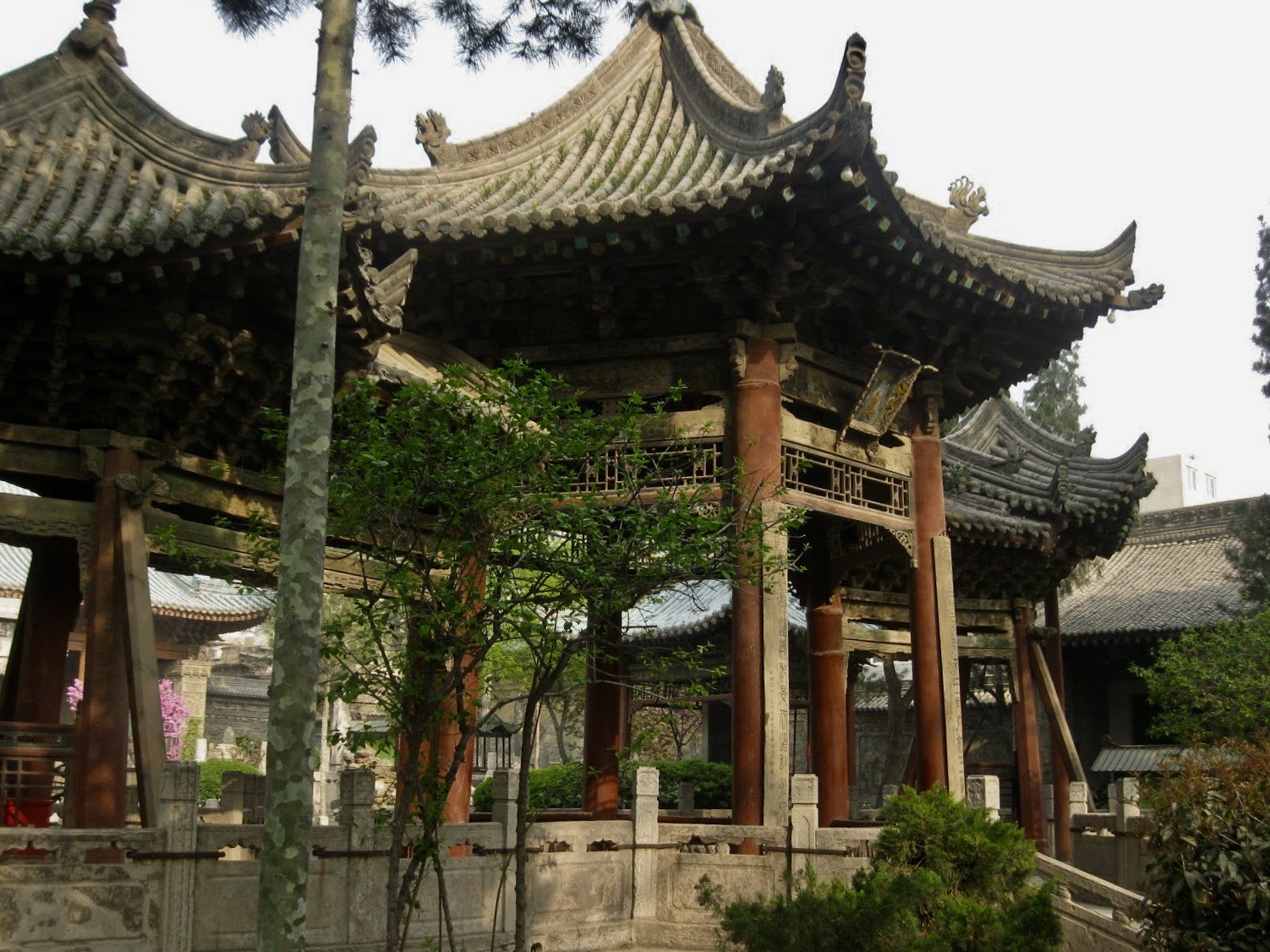
Everyone knows that Chinese food is among the world’s oldest. It is regarded as having one of the most diversified culinary traditions, with thousands of years of evolution. On your final day in Xi’an, enjoy a morning food and market trip with Lost Plate Xian Cuisine Tours, the city’s main food tour provider. This culinary trip costs only 300 CNY and includes the services of a skilled tour guide, transportation, 5 to 6 genuine Chinese cuisine restaurants, and a morning market walk. After your gourmet tour, prepare for your flight to Shanghai and check out of your Xi’an hotel. Take an overnight sleeper train to Shanghai from Xian North Railway Station (one-way in sleeper class starts at 51 USD).

- Backpacker: Ancient City International Youth Hostel, Xi'an Xinglong No.37 Minsu, PuSu Jade Boutique Hotel
- Budget: King Town No.1 Hotel, Titan Times Hotel Music City
- Mid-range: Aurum International Hotel, Atour Hotel, Empark Grand Hotel, Grand Mercure Hotel Xian On Renmin Square
- Luxury: Xi'an Jin Jiang International Hotel, Xi'an Grand Barony, Xi'an Tanglong International Hotel
When it becomes dark, a foreign city may be twice as dangerous - especially if you don't understand the language and are unfamiliar with the area. However, there is no reason to be alarmed about walking home alone in the dark - there is just not enough crime recorded in Xi'an to warrant anxiety.
This section will be added shortly. Refer to the transportation block in the top section.
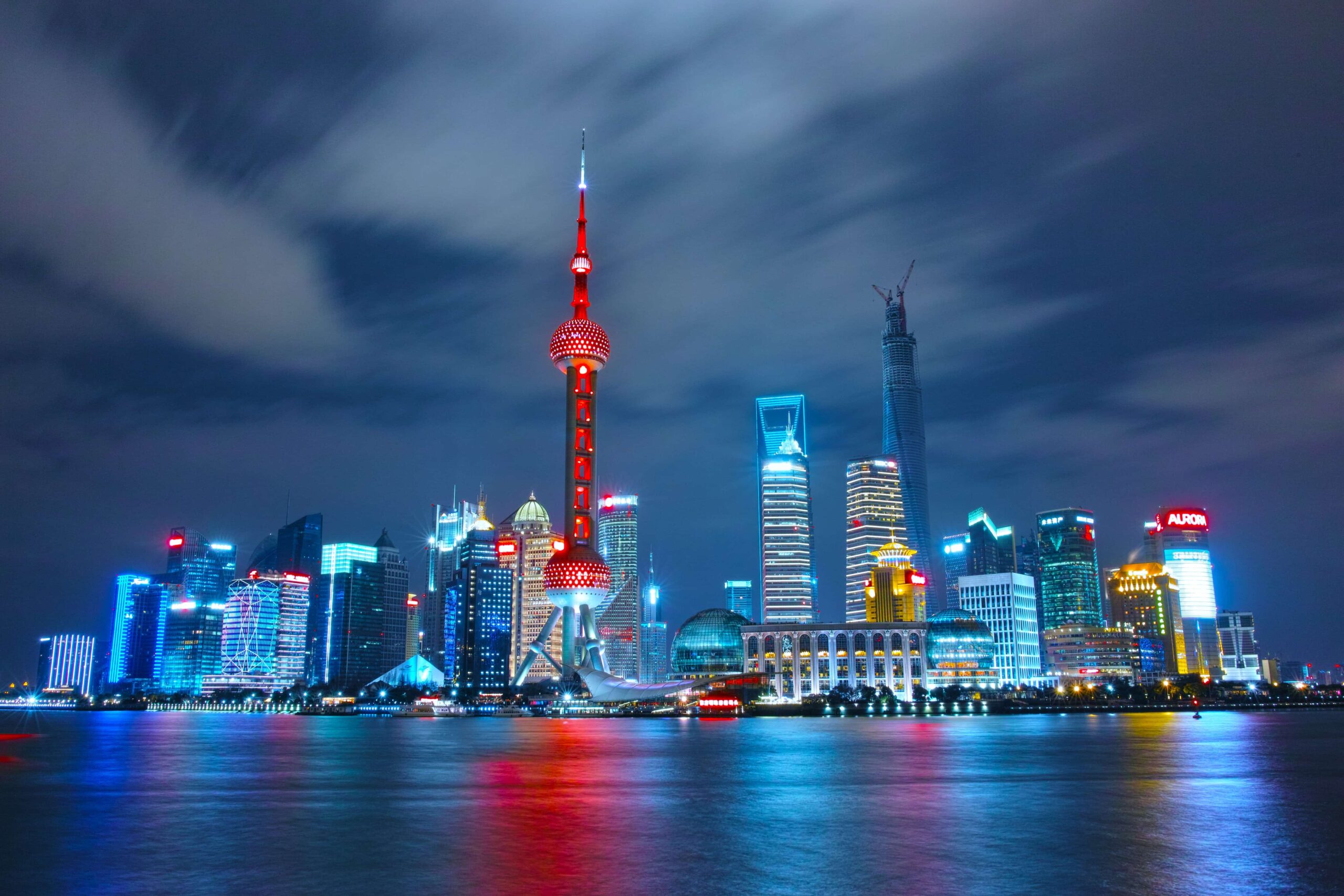
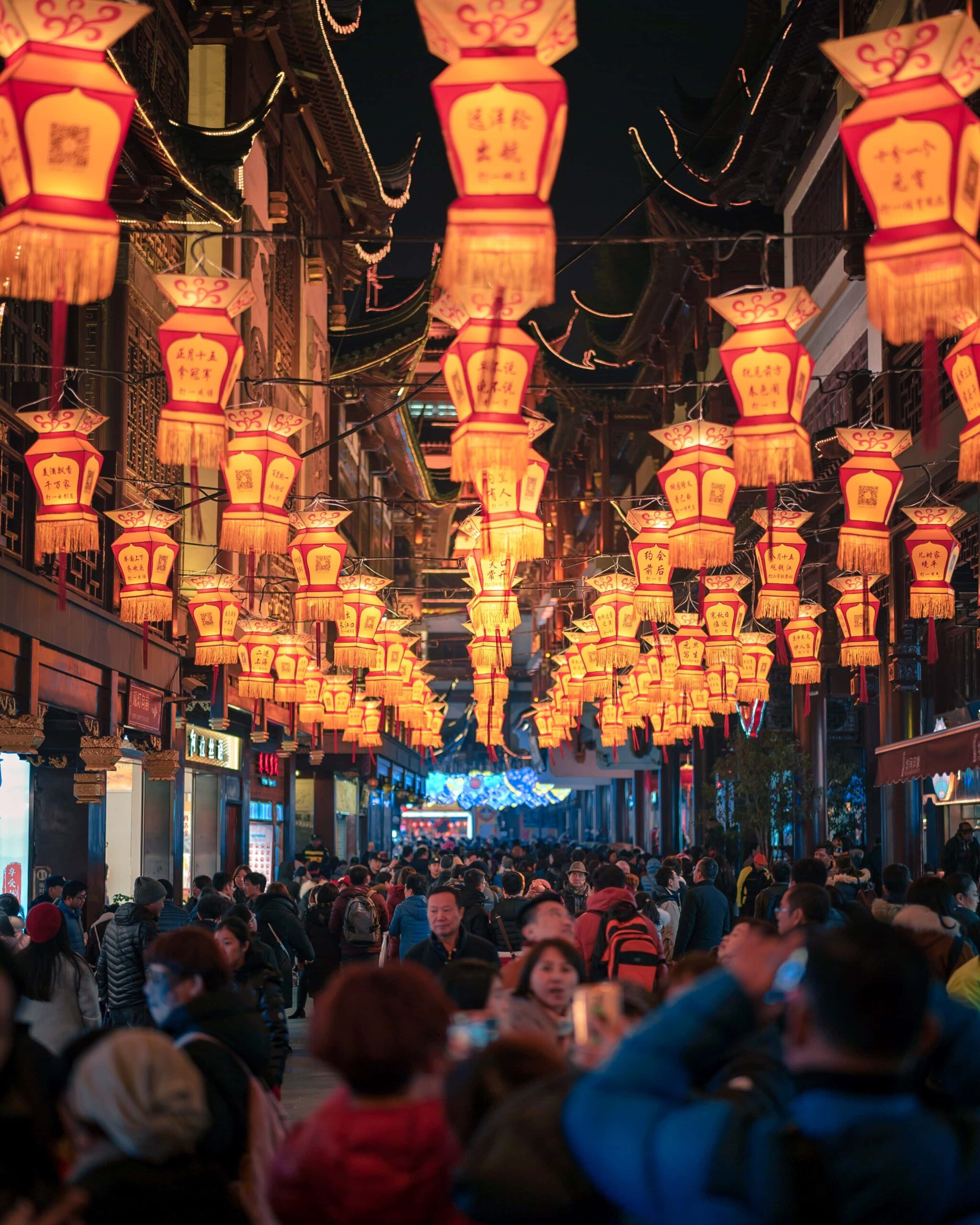
Days 6 and 7
Shanghai
Check into your designated Shanghai hotel upon arrival. Then, go to Shanghai Museum (Shanghai Bowuguan), which is the greatest site to begin your Shanghai journey. This museum is well-known for its extensive collection of historical and cultural goods, including traditional Chinese painting and calligraphy, ancient Chinese bronze ware and pottery, and other valuable works from China’s three most powerful dynasties, the Han, Tang, and Qing. After your museum tour, head to The Former French Concession, Old Shanghai’s most opulent neighborhood. Spend the rest of the afternoon at Shanghai’s Nanshi Old Town. You may visit the Huxinting Teahouse (Huxinting Chashe), City God Temple (Chenghuang Miao), and the Nine Turnings Zig Zag Bridge (Jiu Qu Qiao).
In the evening, sample Shanghai’s nightlife at The Bund (also known as Wai Tan, is a waterfront neighborhood in central Shanghai) and take in a spectacular night view of Lujiazui. Alternatively, see Shanghai Circus World’s ERA Intersection of Time Acrobatics Show. This cultural extravaganza blends Chinese history, acrobatics, Chinese martial arts, magnificent graphics, and live music into one show, making it one of the most jaw-dropping in China. The show’s tickets are 24 USD, and they are money well spent.

On the seventh (and last) day, depart before dawn and watch the sunrise on the horizon in Jade Buddha Temple. Waiting for the sunrise is one of the most intriguing experiences you can have in Shanghai. After a substantial breakfast, your final day in Shanghai might be spent on last-minute shopping and seeing places that you haven’t yet seen. Check in for your international trip home, continue your journey independently, or extend your stay in Shanghai. The choice is entirely yours!
- Backpacker: Blue Mountain Bund Youth Hostel, Zhouzhuang Zhengunong Inn, Hi Inn Shanghai The Bund Fuzhou Road, Jinjiang Inn
- Budget: Shanghai Fish Inn East Nanjing Road, Motel168 Shanghai Yangpu Bridge Inn, Jinjiang Inn Shanghai Expo Park Pusan Road, Wuzhou International Hote
- Mid-range: Shanghai Waigaoqiao Free Trade Zone Vienna Hotel, Hilton Garden Inn Shanghai Hongqiao, The Eton Hotel, Mercure Shanghai Hongqiao SOHO
- Luxury: Renaissance Shanghai Zhongshan Park Hotel, Shanghai Marriott Hotel Parkview, Hengshan Moller Villa Hotel Shanghai, Pullman Zhouzhuang, Shanghai InterContinental Wonderland
This section will be added shortly. Refer to the transportation block in the top section.
The Most Popular Food in China
Chinese food may be found practically anywhere on the globe, but it frequently pales in comparison to the food found in China. The food is as diverse as the people, and you’ll discover local delicacies to taste in whatever place you visit. Its distinct geographical setting, local food and ingredients, local customs, cultural traditions, ethnic inheritance, and some of the most popular local original flavors have all had a significant impact on the evolution of Chinese cuisine as it is today.

Hot Pot
The Chinese Hot Pot begins with a pot of boiling water on a stove in the center of your table. Herbs and vegetables are commonly used to season the water. You make the soup yourself, and it usually contains thinly sliced lamb or beef, a variety of noodles and veggies, and tastes like ginger or garlic. The soup comes with a side of peanut dipping sauce, which you add after the meats have been cooked.
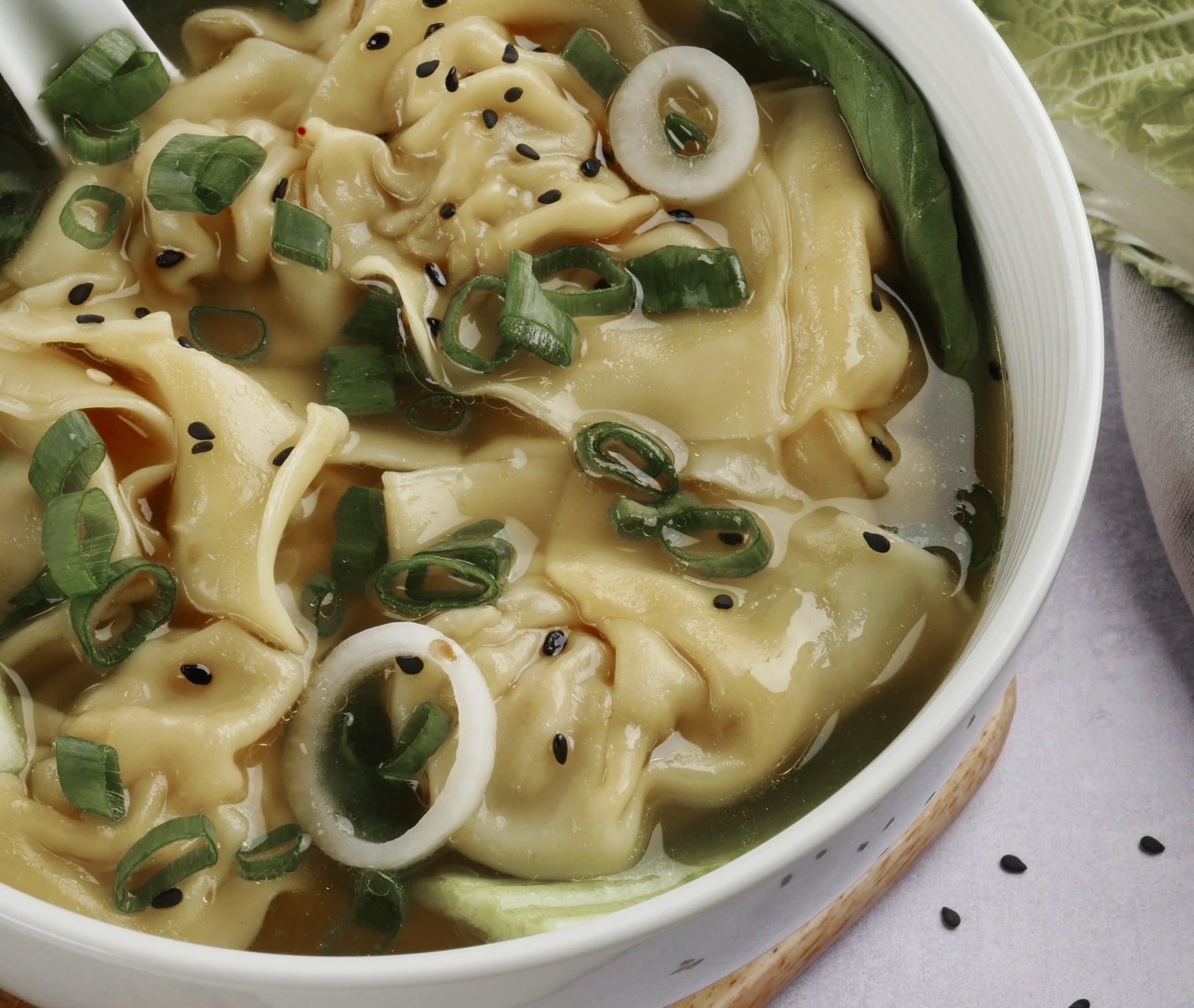
Shanghai Soup Dumplings
This Shanghai speciality is an interesting take on dumplings. They’re cooked and filled with a broth that explodes with taste in your mouth with the first mouthful. They’re tasty, but be careful since they’re hot! They’re often served as a breakfast meal, but they’re so delicious that you’ll want to eat them numerous times while you’re in town.
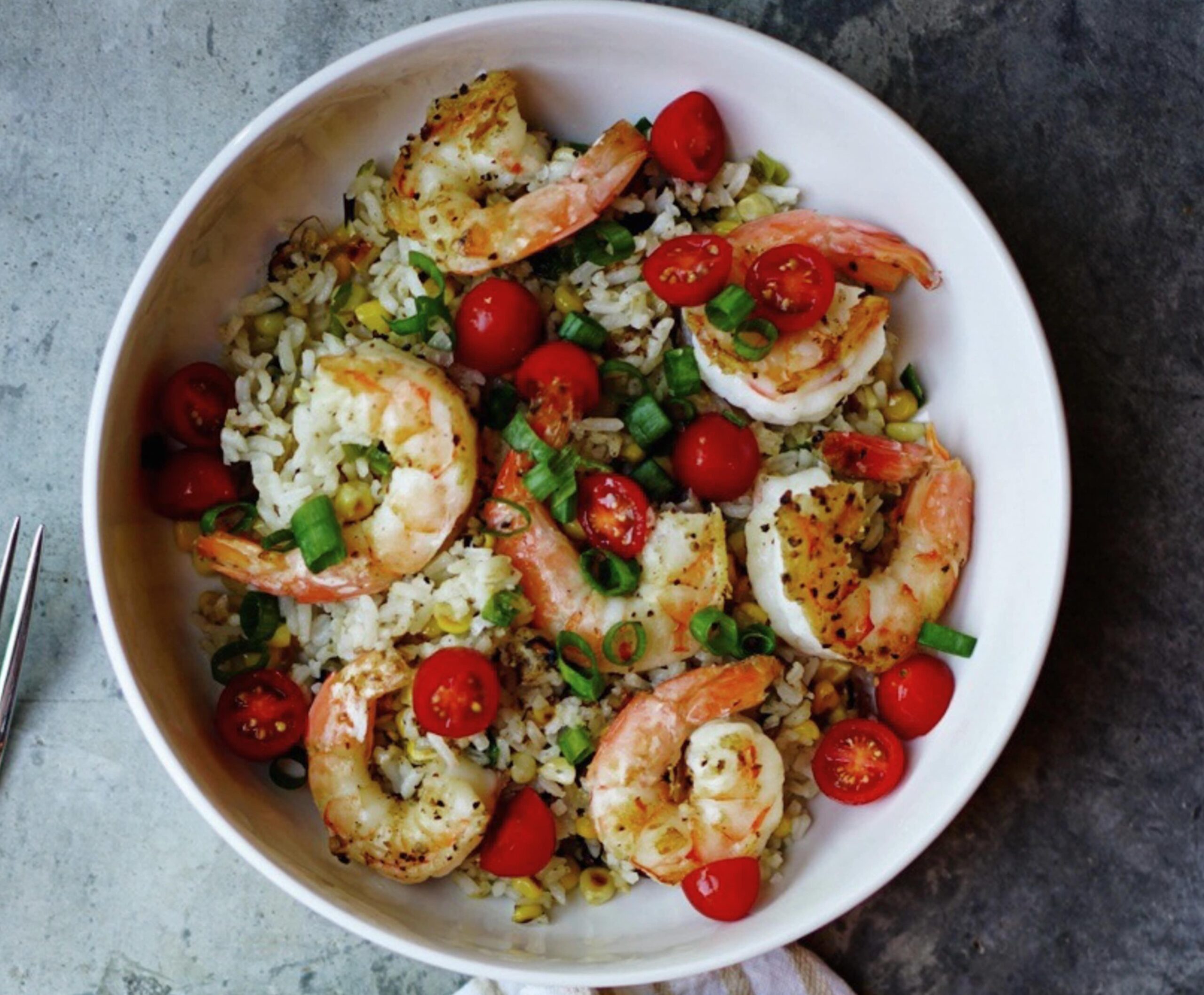
Yangzhou Fried Rice
Yangzhou fried rice is a Chinese meal made of rice, eggs, and vegetables such as carrots, mushrooms, and peas, with additional ingredients such as shrimp, pork, scallions, and Chinese ham. Traditional preparations may include sea cucumbers, crab meat, and bamboo stalks. The dish is said to have originated with General Yang Su of the Sui Dynasty. When he patroled Jiangdu with Emperor Yangdi, he brought it to the Yangzhou culture since it was one of his favorite foods. Originally, it was a peasant dish made with leftover rice and little pieces of meat and vegetables.
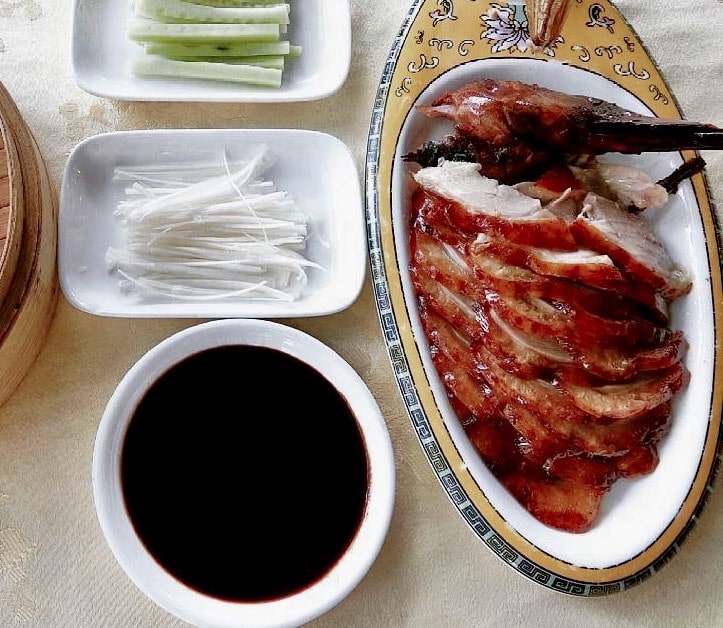
Peking Duck
Crispy duck paired with a unique sauce and flat pancakes is a Beijing delicacy. There are restaurants across the city that specialize in this dish but inquire around because some are better than others. The duck bones are frequently cooked into a soup or broth that is served at the conclusion of the meal.

General Tso’s Chicken
General Tso’s chicken is a sweet and spicy meal that consists of deep-fried chicken dices stir-fried with ginger, garlic, scallions, and hot chili peppers in a sauce made of sugar, soy sauce, rice vinegar, and rice wine. Despite being named after General Tso Tsungtang, the dish has no actual link to him. The meal is most likely a descendent of a basic Hunanese chicken dish, and two immigrant cooks, Chinese and Taiwanese, claim to be its creators, respectively.
What's the Travel Budget for China?
Flights
- Flights start at roughly $60 from nearby countries. Tickets however on average cost around $700 and can cost way more depending on which class and from which country you depart from.
Accommodation
- Nomad Backpacking style travelers can expect to spend around $200 for a week
- Budget travelers can expect to spend around $460 for a week
- Mid-range travelers can expect to spend around $670 for a week
- Luxury travelers can expect to spend around $1,000 for a week
Food Budget (Three meals and drinks)
- Nomad Backpacking style travelers can expect to spend around $22 per person per day
- Budget travelers can expect to pay around $30 per person per day
- Mid-range travelers on average would cost $35 to $50 per person per day
- Luxury travelers can expect to pay around $60 to $110 per person per day
Overall Budget Styles (Not including Flights, Tours, Transportation, or Car Rental)
- Nomad Backpacking style travelers can expect to spend roughly $360 for a week
- Budget travelers can expect to spend close to $710 for one person for a week
- Mid-range travelers can expect to spend approximately $1,100 for one person for a week
- Luxury travelers can expect to spend around $1,750 for one person for a week
Flights
- Flights start at roughly $60 from nearby countries. Tickets however on average cost around $700 and can cost way more depending on which class and from which country you depart from.
Accommodation
- Nomad Backpacking style travelers can expect to spend around $200 for a week
- Budget travelers can expect to spend around $460 for a week
- Mid-range travelers can expect to spend around $670 for a week
- Luxury travelers can expect to spend around $1,000 for a week
Food Budget (Three meals and drinks)
- Nomad Backpacking style travelers can expect to spend around $22 per person per day
- Budget travelers can expect to pay around $30 per person per day
- Mid-range travelers on average would cost $35 to $50 per person per day
- Luxury travelers can expect to pay around $60 to $110 per person per day
Overall Budget Styles (Not including Flights, Tours, Transportation, or Car Rental)
- Nomad Backpacking style travelers can expect to spend roughly $360 for a week
- Budget travelers can expect to spend close to $710 for one person for a week
- Mid-range travelers can expect to spend approximately $1,100 for one person for a week
- Luxury travelers can expect to spend around $1,750 for one person for a week
Flights
- Flights start at roughly $60 from nearby countries. Tickets however on average cost around $700 and can cost way more depending on which class and from which country you depart from.
Accommodation
- Nomad Backpacking style travelers can expect to spend around $200 for a week
- Budget travelers can expect to spend around $460 for a week
- Mid-range travelers can expect to spend around $670 for a week
- Luxury travelers can expect to spend around $1,000 for a week
Food Budget (Three meals and drinks)
- Nomad Backpacking style travelers can expect to spend around $22 per person per day
- Budget travelers can expect to pay around $30 per person per day
- Mid-range travelers on average would cost $35 to $50 per person per day
- Luxury travelers can expect to pay around $60 to $110 per person per day
Overall Budget Styles (Not including Flights, Tours, Transportation, or Car Rental)
- Nomad Backpacking style travelers can expect to spend roughly $360 for a week
- Budget travelers can expect to spend close to $710 for one person for a week
- Mid-range travelers can expect to spend approximately $1,100 for one person for a week
- Luxury travelers can expect to spend around $1,750 for one person for a week
Flights
- Flights start at roughly $60 from nearby countries. Tickets however on average cost around $700 and can cost way more depending on which class and from which country you depart from.
Accommodation
- Nomad Backpacking style travelers can expect to spend around $200 for a week
- Budget travelers can expect to spend around $460 for a week
- Mid-range travelers can expect to spend around $670 for a week
- Luxury travelers can expect to spend around $1,000 for a week
Food Budget (Three meals and drinks)
- Nomad Backpacking style travelers can expect to spend around $22 per person per day
- Budget travelers can expect to pay around $30 per person per day
- Mid-range travelers on average would cost $35 to $50 per person per day
- Luxury travelers can expect to pay around $60 to $110 per person per day
Overall Budget Styles (Not including Flights, Tours, Transportation, or Car Rental)
- Nomad Backpacking style travelers can expect to spend roughly $360 for a week
- Budget travelers can expect to spend close to $710 for one person for a week
- Mid-range travelers can expect to spend approximately $1,100 for one person for a week
- Luxury travelers can expect to spend around $1,750 for one person for a week
If you want to know what to pack, read this list below:
- This is a Casual Asian country that can get extremely cold or too rainy and windy, dress accordingly
- Raincoat or Light Waterproof Jacket
- Hiking Boots or Sturdy Sneakers (Shoes You Don’t Mind Getting Wet)
- Sunscreen
- Insect Protection – Repellent and Clothing
- Sunglasses and Sun Hat
- Water Shoes
- Beach Towels/Sarong
- Dry Bag
- Money Belt or Cross Bag
- Portable Medical Kit
- Flashlight or Headlamp
- Copies of your passport.
- Get all the needed vaccinations before traveling
- A power bank is a must in any travel.
- Always have some cash with you just in case there are no ATMs and if you are dealing with a business that solely accepts cash
- Get yourself an adapter for your gadgets
- 1 toothbrush
- 1 tube of toothpaste
- 1 razor
- 1 package of dental floss
- 1 small bottle of shampoo
- 1 small bottle of shower gel
- 1 towel
- Deodorant
- Band-Aids
- Hydrocortisone cream
- Antibacterial cream
- Earplugs
- Tylenol
- Hand sanitizer (germs = sick = bad holiday)
- A key or combination lock
- Zip-lock bags
- Plastic bags (great for laundry)
- Universal charger/adaptor
- LifeStraw (A water bottle with a purifier)
- 1 dry shampoo spray & talc powder
- 1 hairbrush
- Makeup you use
- Hairbands & hair clips
- Feminine hygiene products
Clothing For Boys
- 1 pair of jeans or khaki pants
- 1 pair of shorts
- 1 bathing suit
- 5 T-shirts
- 1 long-sleeved T-shirt
- 1 pair of flip-flops
- 1 pair of sneakers
- 6 pairs of socks
- 5 pairs of boxer shorts
Clothing For Girls
- 1 swimsuit
- 1 sarong
- 1 pair of stretchy jeans
- 1 pair of leggings
- 2-3 long-sleeve tops
- 2-3 T-shirts
- 3-4 spaghetti tops
- 1 light cardigan
Want to plan your own trip, here are some of the best resources that can help you
- Skyscanner – They search small websites and budget airlines that larger search sites tend to miss. They are hands down the number one place to start.
- Momondo – This is another favorite flight search engine because they search such a wide variety of sites and airlines. Always check here too.
- Booking.com – The best all-around booking site that constantly provides the most affordable and lowest rates. They have the widest selection of budget accommodation.
- Couchsurfing – This website allows you to stay on people’s couches or spare rooms for free. It’s a great way to save money while meeting locals who can tell you the ins and outs of their city. The site also lists events you can attend to meet people (even if you’re not staying with someone).
- Intrepid Travel – If you want to do group tours, go with Intrepid. They offer good small group tours that use local operators and leave a small environmental footprint.
- Grassroots Volunteering – For volunteering, Grassroots Volunteering compiles a list of good local volunteer organizations that keep the money within the community.
- Get Your Guide – Get Your Guide is a huge online marketplace for tours and excursions. They have tons of tour options available in cities all around the world, including everything from cooking classes, walking tours, street art lessons, and more! It has the world’s largest collection of things to do with more than 30,000 activities in 7500 destinations.
- SafetyWing – Safety Wing offers convenient and affordable plans tailored to digital nomads and long-term travelers. They have cheap monthly plans, great customer service, and an easy-to-use claims process that makes it perfect for those on the road.
- Trip Advisor: Check the reviews and then book your accommodation. TripAdvisor is where you go when you want to compare prices with multiple accommodation providers.
- VRBO: is the main search engine to use when you are looking for a home or apartment rental. It can sometimes be cheaper than hotels and it is the best way to stay in areas that offer a more local feel.
- Hostelworld: With one of the largest databases of hostels in the world, Hostelworld is the go-to site when you are looking for budget accommodation.
- Rome 2 Rio: If you want to see how to get somewhere by plane, train, bus, ferry, or car Rome2Rio lays it all out for you as well as related costs.
- World Nomads Insurance: When traveling you should always have travel insurance. We have found the best bang for your buck is by far World Nomads.
Final Thoughts on China
With its ancient structures left from its many dynasties, entrepreneurial people, magnificent and distinct landmarks, great hospitality, exciting festivals and dances, and a breathtaking environment, China has a refined and rich heritage that can be observed across the country going back to 4,000 years. A fantastic option for anybody searching for a great region of Asia to discover. China is breathtakingly beautiful, with incredible national treasures, wildlife, and gorgeous scenery. Would you go to China?
Have you been to China? Please share your thoughts in the comments section below.